Select a Language
Sacred Assemblies of the Feast of Trumpets, Day of Atonement, the Feast of Tabernacles 2023
Souls Thirsting for the Water of Life, Come to the Spirit and the Bride
“But when the Jewish Feast of Tabernacles was near, . . . On the last and greatest day of the Feast, Jesus stood and said in a loud voice, ‘If anyone is thirsty, let him come to me and drink.Whoever believes in me, as the Scripture has said, streams of living water will flow from within him.’ By this he meant the Spirit, whom those who believed in him were later to receive.” Jn 7:2, 37–39
In accordance with God’s command, among the seven feasts in three times, the Feast of Tabernacles is a festival promised with the blessing of the Holy Spirit. 2,000 years ago, Jesus Christ granted that blessing, and today the Spirit and the Bride do (Rev 22:17).
The feasts in the third time, including the Feast of Tabernacles, were observed from September 15 to October 6. The members of the Church of God in 175 countries, earnestly desiring the blessings and power bestowed by Elohim God, faithfully observed the feasts, fervently hoping for the swift completion of the world evangelism.
Feast of Trumpets: The Trumpet of the Gospel Blowing in Repentance
Like all the seven feasts in the three times, the Feast of Trumpets too, originates from the work of Moses during the Exodus 3,500 years ago. After the breaking of the Ten Commandments due to the worship of the golden calf, the Israelites confessed their sins to God, repented with their whole heart, and, as a sign of forgiveness, God granted the second set of the Ten Commandments. The day when Moses descended from Mount Sinai with the second set of the Ten Commandments is the Day of Atonement, occurring on the 10th day of the seventh month. The Feast of Trumpets, which falls on the 1st day of the seventh month in the sacred calendar, is the day when God, ten days prior, initiated the sounding of the trumpet, urging repentance and preparation for the Day of Atonement (Ex 34:1–29; Lev 23:23–24).
In celebration of the Feast of Trumpets on September 15 (the first day of the 7th month by the sacred calendar), Mother earnestly hoped that Her children would fully confess and repent before God and receive atonement for all their sins, and that everyone would powerfully blow the trumpet of repentance so that all mankind could receive the blessing of forgiveness of sins.

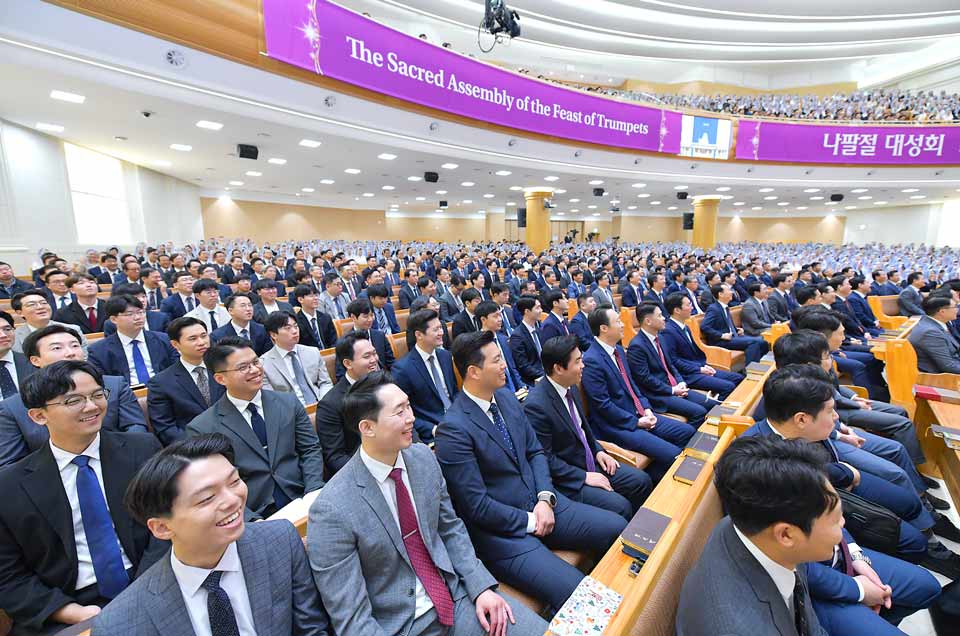
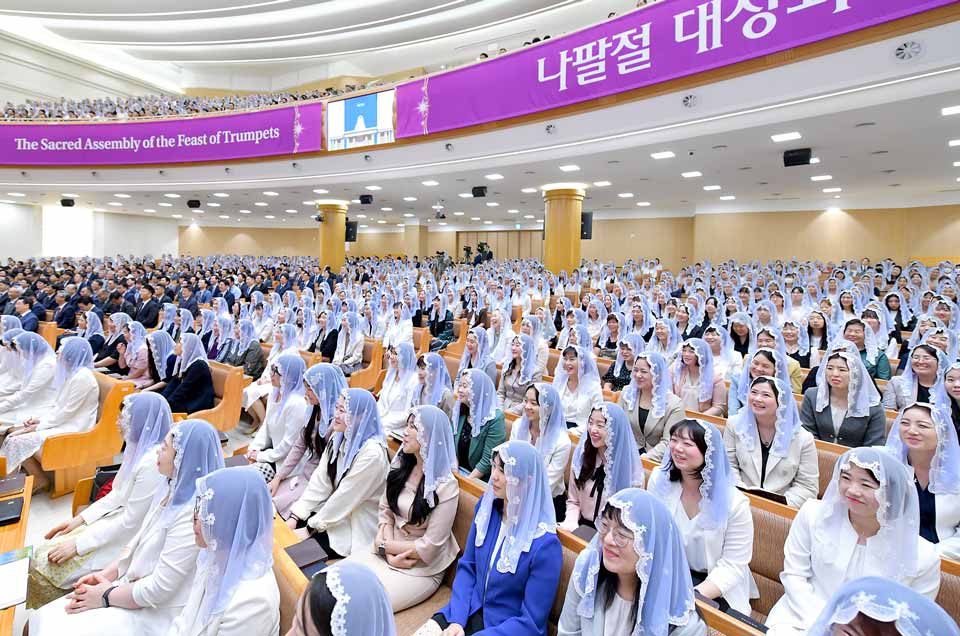
General Pastor Kim Joo-cheol, who explained the origin of the Feast of Trumpets, said, “For those who have sinned in heaven to return to heaven, repentance must come first. Repentance includes not only confessing our sins and praying for forgiveness, but also dedicating ourselves to leading all mankind to forgiveness of sins through devotion and service.” In General Pastor Kim Joo-cheol’s sermon, “If there has been a time when we did not follow God’s will and stayed in sin, let us truly repent and preach the gospel with confidence in God Elohim and the new covenant to save all souls,” the members responded with a powerful “Amen” and engraved the words in their hearts (Jn 16:33, Isa 41:10–14; Lk 5:31–32; 1Jn 1:8–10; Isa 53:1–6; Eph 1:7; Jer 31:31–34; Lk 22:7–20).
From this evening, the ten-day prayer week for the Day of Atonement began. Members around the world devoutly prepared for the Day of Atonement, confessing their past sins morning and evening and praying that they would bear the fruit of the gospel worthy of repentance.
Day of Atonement: All of Us on the Path of Forgiveness of Sins
The providence of forgiveness of sins is inherent in the ceremony of the Day of Atonement in the Old Testament times. In ordinary times, when the people committed a sin, the priest offered a sin offering with the blood of an animal and the sin was temporarily transferred to the sanctuary. Afterward, on the Day of Atonement, the high priest chose two male goats, drew lots, and offered one as a sin offering to God. The other goat, designated as Azazel, symbolically bore the sins of the people and was sent into the wilderness, where the Azazel goat’s death signified the complete removal of the people’s sins. This means that our sins will be handed over to Satan, represented by Azazel, and that Satan, the author of sin, will be thrown into the eternal lake of fire, so that sin will also disappear (Lev 16:5–22; Rev 20:10).

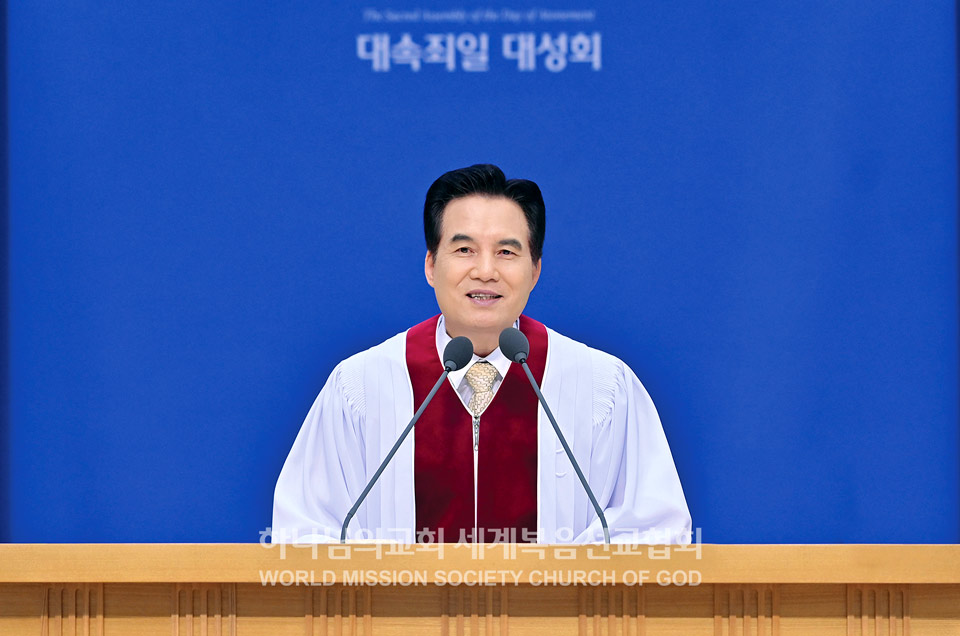
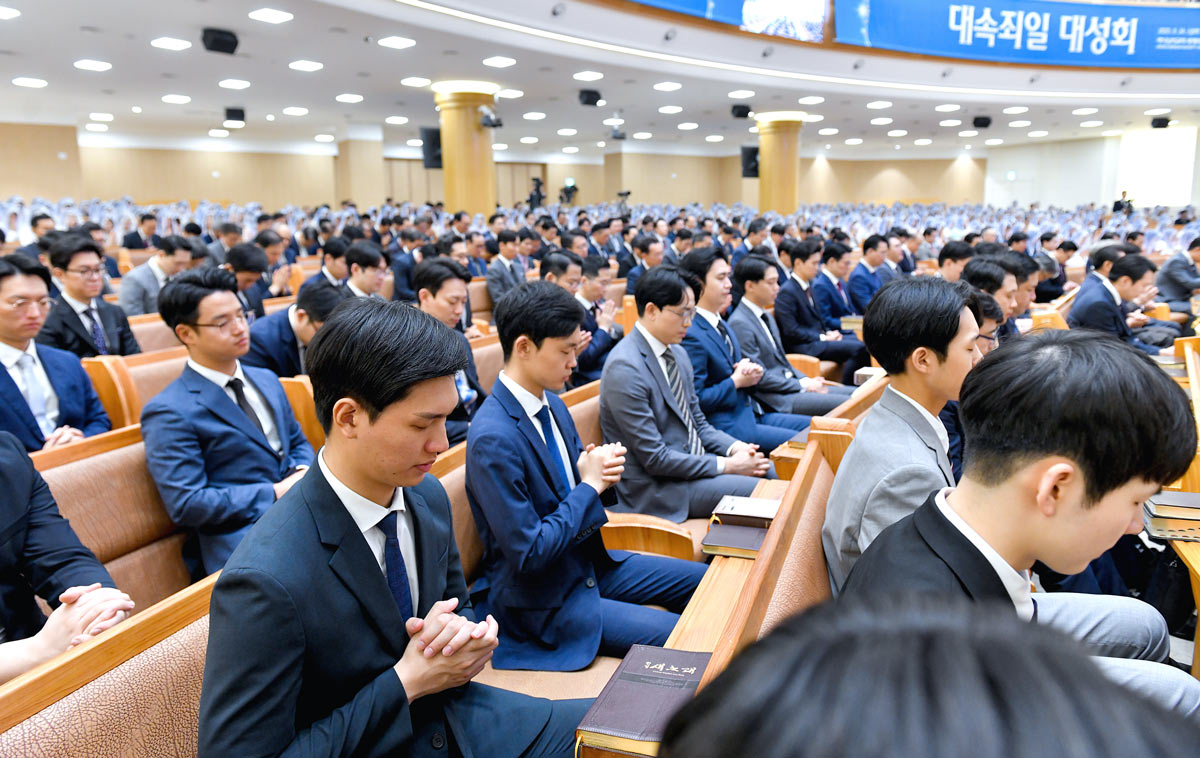
On September 24 (the 10th day of the seventh month in the sacred calendar), on the occasion of the Sacred Assembly of the Day of Atonement, Mother expressed deep gratitude to Father who did not hesitate to sacrifice and suffer on the cross by becoming a sin offering to forgive the sins of His children. Mother earnestly prayed that Father would answer all the prayers of the children who repented with tears and grant them the grace of forgiveness of sins.
General Pastor Kim Joo-cheol said, “The sacrificial offering of atonement represents God the Father, and the Most Holy Place, which the high priest must enter on the Day of Atonement for the complete atonement of the people, is the heavenly Jerusalem, representing God the Mother. Only through Heavenly Father and Mother can our sins be completely forgiven.” He also urged, “When Jesus first proclaimed the gospel of the kingdom, the first thing he said was ‘Repent.’ Realizing that preaching is an important act of faith that leads others to repentance and at the same time leads to true repentance ourselves, let us make known to the whole world our Father and Mother, who are the source of forgiveness of sins” (Lk 5:30–32; Isa 59:1–3; Ps 7:12–13; Lk 13:1–5; Rev 2:4–5, 21–23).
After the service, Mother encouraged the members who had worked hard to observe the feast and taught them the attitude a child of God should have. Mother enlightened the members to the responsibility of God’s children who should compassionately view the suffering and fearful individuals worldwide, affected by international conflicts, climate change, earthquakes, and other disasters, as part of their own family. She emphasized that bringing the truth of salvation and the hope of heaven to them is not only fulfilling the duty of God’s children but also bringing joy to Father who desires the salvation of mankind.
Feast of Tabernacles and the Last Day of the Feast: The Water of Life from the Spirit and the Bride to the Entire World
The Israelites, having received forgiveness for their sin of worshiping the golden calf, were deeply moved by that grace. In response, they gathered materials to construct a tabernacle to house the Ten Commandments five days after the Day of Atonement for seven days from the 15th day of the 7th month of the sacred calendar, as God commanded them. To commemorate this event in Old Testament times, people built booths with various tree branches during the Feast of Tabernacles and joyfully dwelled in them for a week. In New Testament times, a preaching week is held to lead God’s people who are represented as the materials of the temple (Ex 35:4–29; 36:1–6; Lev 23:33–41; Jer 5:14; Eph 2:20–22).
On September 29 (the 15th day of the seventh month in the sacred calendar), the sacred assembly of the Feast of Tabernacles took place simultaneously in all the Church of God throuth the whole world. Mother prayed that the children, who had washed away their sins on the Day of Atonement, would be granted the Holy Spirit like a waterfall in their purified hearts, and that the work of finding all the souls lost from heaven through the power of the Holy Spirit would happen as soon as possible.
General Pastor Kim Joo-cheol emphasized that the mission of saving mankind can be accomplished when we do the gospel work with the help of the Holy Spirit and a willing heart. He fervently exclaimed, “In any era, amazing works have taken place when there was God’s help. Let’s spread the gospel with God’s perspective and power, and complete the gospel, which is impossible by our own strength” (Mt 9:27–30; 28:18–20; Mk 9:23; Mt 7:7).
The saints, who diligently preached the gospel to their families and neighbors during the 7-day preaching week starting from the evening of the Feast of Tabernacles, welcomed the last day of the Feast on October 6 (the 22nd day of the seventh month according to the sacred calendar), hoping that the latter rain of the Holy Spirit would abundantly fall.
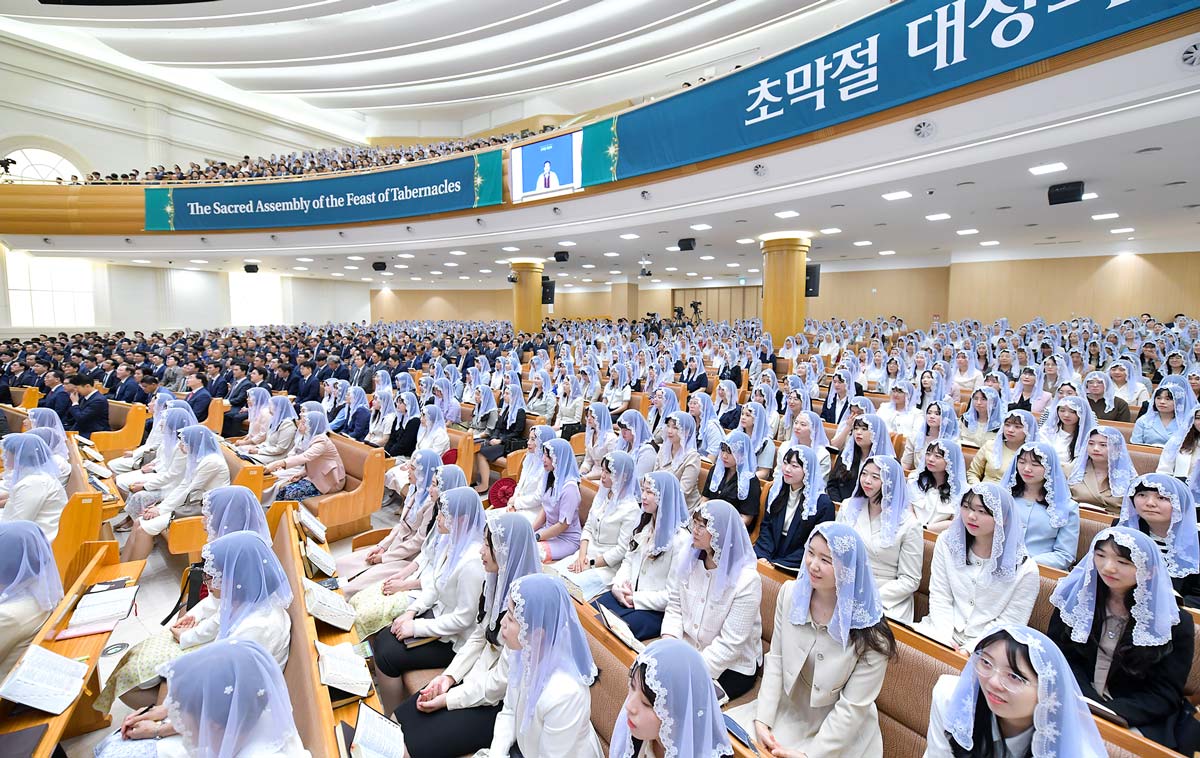


General Pastor Kim Joo-cheol explained that the condition for receiving the Holy Spirit is to know God correctly. He reflected on the history of the early Church, where those who accepted Jesus received the Holy Spirit and led thousands of people a day. In his sermon, he stated, “In this era, the Holy Spirit and the Bride enable us to receive the Holy Spirit, likened to the water of life. Let’s diligently preach the source of the water of life to thirsty souls who do not know the truth of salvation, by the power of the Holy Spirit. That is the mission of those who have received the Holy Spirit” (Rev 22:17; Hos 6:1–3; Eze 47:1–12; Jn 20:19–22; Gal 4:26).
During the morning and afternoon services on this day, Mother prayed earnestly fervently prayed to God, asking Him to gather and save the dispersed heavenly family around the world through the Holy Spirit Movement of the Feast of Tabernacles. After the service, Mother didn’t withhold words of blessing and instruction. She felt sorry for the lives lost due to disasters, big and small, and for people worldwide experiencing sorrow and pain as a result. Mother stated, “Jesus asked Peter three times, ‘Do you love me? Feed my sheep.’ Saving a dying soul is a way to express love for God, and it is the most noble love.” Mother earnestly asked to continue making efforts for the gospel.
The autumn feasts, which began with Mother’s prayer, concluded with Mother’s words. Empowered by the latter rain of the Holy Spirit and the blessings bestowed during the feasts, the brothers and sisters worldwide are actively engaged in spreading the gospel, driven by a strong determination to fulfill God’s will for the salvation of all mankind.